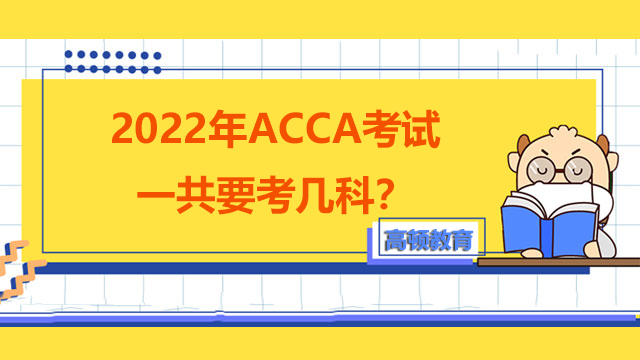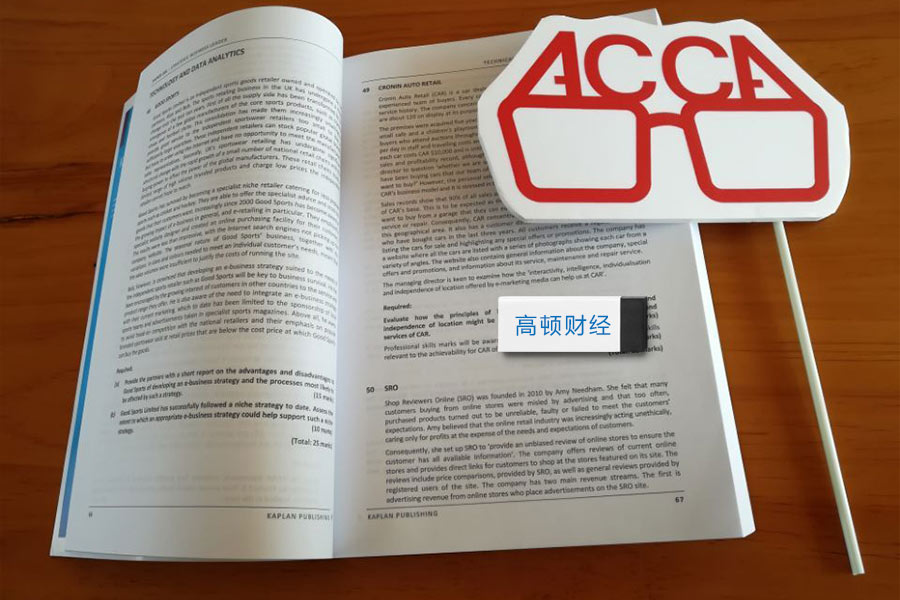2015ACCA F5业绩管理考试大纲
来源:
高顿网校
2015-03-25
? ACCA 2014 All rights reserved.
1
Performance Management
(F5)
December 2014 to June
2015
This syllabus and study guide is designed to help
This syllabus and study guide is designed to help
with planning study and to provide detailed
information on what could be assessed in
any examination session.
THE STRUCTURE OF THE SYLLABUS AND
STUDY GUIDE
Relational diagram of paper with other papers
This diagram shows direct and indirect links
between this paper and other papers preceding or
following it. Some papers are directly underpinned
by other papers such as Advanced Performance
Management by Performance Management. These
links are shown as solid line arrows. Other papers
only have indirect relationships with each other
such as links existing between the accounting and
auditing papers. The links between these are shown
as dotted line arrows. This diagram indicates where
you are expected to have underpinning knowledge
and where it would be useful to review previous
learning before undertaking study.
Overall aim of the syllabus
This explains briefly the overall objective of the
paper and indicates in the broadest sense the
capabilities to be developed within the paper.
Main capabilities
This paper’s aim is broken down into several main
capabilities which divide the syllabus and study
guide into discrete sections.
Relational diagram of the main capabilities
This diagram illustrates the flows and links between
the main capabilities (sections) of the syllabus and
should be used as an aid to planning teaching and
learning in a structured way.
Syllabus rationale
This is a narrative explaining how the syllabus is
structured and how the main capabilities are linked.
The rationale also explains in further detail what the
examination intends to assess and why.
Detailed syllabus
This shows the breakdown of the main capabilities
(sections) of the syllabus into subject areas. This is
the blueprint for the detailed study guide.
Approach to examining the syllabus
This section briefly explains the structure of the
examination and how it is assessed.
Study Guide
This is the main document that students, learning
and content providers should use as the basis of
their studies, instruction and materials.
Examinations will be based on the detail of the
study guide which comprehensively identifies what
could be assessed in any examination session.
The study guide is a precise reflection and
breakdown of the syllabus. It is divided into sections
based on the main capabilities identified in the
syllabus. These sections are divided into subject
areas which relate to the sub-capabilities included
in the detailed syllabus. Subject areas are broken
down into sub-headings which describe the detailed
outcomes that could be assessed in examinations.
These outcomes are described using verbs
indicating what exams may require students to
demonstrate, and the broad intellectual level at
which these may need to be demonstrated
(*see intellectual levels below)。
INTELLECTUAL LEVELS
The syllabus is designed to progressively broaden
and deepen the knowledge, skills and professional
values demonstrated by the student on their way
through the qualification.
The specific capabilities within the detailed
syllabuses and study guides are assessed at one of
? ACCA 2014 All rights reserved.
2
three intellectual or cognitive levels:
LevelⅠ: Knowledge and comprehension
LevelⅡ: Application and analysis
LevelⅢ: Synthesis and evaluation
Very broadly, these intellectual levels relate to the
three cognitive levels at which the Knowledge
module, the Skills module and the Professional level
are assessed.
Each subject area in the detailed study guide
included in this document is given a 1, 2, or
3 superscript, denoting intellectual level, marked at
the end of each relevant line. This gives an
indication of the intellectual depth at which an area
could be assessed within the examination. However,
while level 1 broadly equates with the Knowledge
module, level 2 equates to the Skills module and
level 3 to the Professional level, some lower level
skills can continue to be assessed as the student
progresses through each module and level. This
reflects that at each stage of study there will be a
requirement to broaden, as well as deepen
capabilities. It is also possible that occasionally
some higher level capabilities may be assessed at
lower levels.
LEARNING HOURS AND EDUCATION
RECOGNITION
The ACCA qualification does not prescribe or
recommend any particular number of learning hours
for examinations because study and learning
patterns and styles vary greatly between people and
organisations. This also recognises the wide
diversity of personal, professional and educational
circumstances in which ACCA students find
themselves.
As a member of the International Federation of
Accountants, ACCA seeks to enhance the education
recognition of its qualification on both national and
international education frameworks, and with
educational authorities and partners globally. In
doing so, ACCA aims to ensure that its qualifications
are recognized and valued by governments,
regulatory authorities and employers across all
sectors. To this end, ACCA qualifications are
currently recognized on the education frameworks in
several countries. Please refer to your national
education framework regulator for further
information.
Each syllabus contains between 23 and 35 main
subject area headings depending on the nature of
the subject and how these areas have been broken
down.
GUIDE TO EXAM STRUCTURE
The structure of examinations varies within and
between modules and levels.
The Fundamentals level examinations contain
100% compulsory questions to encourage
candidates to study across the breadth of each
syllabus.
The Knowledge module is assessed by equivalent
two-hour paper based and computer based
examinations.
The Skills module examinations F5-F9 are all paper
based
three-hour papers containing a mix of objective and
longer type questions. The Corporate and
Business
Law (F4) paper is a two- hour computer based
objective test examination which is also
available as a paper based version from the
December 2014 examination session.
The Professional level papers are all three-hour
paper based examinations, all containing two
sections. Section A is compulsory, but there will be
some choice offered in Section B.
For all three hour examination papers, ACCA has
introduced 15 minutes reading and planning time.
This additional time is allowed at the beginning of
each three-hour examination to allow candidates to
read the questions and to begin planning their
answers before they start writing in their answer
books. This time should be used to ensure that all
the information and exam requirements are properly
read and understood.
During reading and planning time candidates may
only annotate their question paper. They may not
write anything in their answer booklets until told to
do so by the invigilator.
The Essentials module papers all have a Section A
containing a major case study question with all
? ACCA 2014 All rights reserved.
3
requirements totalling 50 marks relating to this
case. Section B gives students a choice of two from
three 25 mark questions.
Section A of both the P4 and P5 Options papers
contain one 50 mark compulsory question, and
Section B will offer a choice of two from three
questions each worth 25 marks each.
Section A of each of the P6 and P7 Options papers
contains 60 compulsory marks from two questions;
question 1 attracting 35 marks, and question 2
attracting 25 marks. Section B of both these
Options papers will offer a choice of two from three
questions, with each question attracting 20 marks.
All Professional level exams contain four
professional marks.
The pass mark for all ACCA Qualification
examination papers is 50%.
GUIDE TO EXAMINATION ASSESSMENT
ACCA reserves the right to examine anything
contained within the study guide at any examination
session. This includes knowledge, techniques,
principles, theories, and concepts as specified.
For the financial accounting, audit and assurance,
law and tax papers except where indicated
otherwise, ACCA will publish examinable
documents once a year to indicate exactly
what regulations and legislation could potentially be
assessed within identified examination sessions
For paper based examinations regulation issued or
legislation passed on or before 31st August annually,
will be examinable from 1st September of the
following year to 31st August t of the year after that.
Please refer to the examinable documents for the
paper (where relevant) for further information.
Regulation issued or legislation passed in
accordance with the above dates may be
examinable even if the effective date is in the future.
The term issued or passed relates to when
regulation or legislation has been formally approved.
The term effective relates to when regulation or
legislation must be applied to an entity transactions
and business practices.
The study guide offers more detailed guidance on
the depth and level at which the examinable
documents will be examined. The study guide
should therefore be read in conjunction with the
examinable documents list.
? ACCA 2014 All rights reserved.
4
Syllabus
AIM
To develop knowledge and skills in the application
of management accounting techniques to
quantitative and qualitative information for planning,
decision-making, performance evaluation, and
control
MAIN CAPABILITIES
On successful completion of this paper, candidates
should be able to:
A Explain and apply cost accounting techniques
B Select and appropriately apply
decision-making techniques to facilitate
business decisions and promote efficient and
effective use of scarce business resources,
appreciating the risks and uncertainty inherent
in business and controlling those risks
C Identify and apply appropriate budgeting
techniques and methods for planning and
control
D Use standard costing systems to measure
and control business performance and to
identify remedial action
E Identify and discuss performance
management information and measurement
systems and assess the performance of
an organisation from both a financial and nonfinancial
viewpoint, appreciating the problems
of controlling divisionalised businesses and
the importance of allowing for external
aspects
RELATIONAL DIAGRAM OF MAIN CAPABILITIES
Decision-making
techniques (B)
Budgeting and control (C)
Performance
management and
control (D)
Specialist cost and
management accounting
techniques (A)
PM (F5)
APM (P5)
F2/FMA
BA (P3)
? ACCA 2014 All rights reserved.
5
RATIONALE
The syllabus for Paper F5, Performance
Management, builds on the knowledge gained in
Paper F2, Management Accounting. and seek to
examine candidates’ understanding of how to
manage the performance of a business. It also
prepares candidates for more specialist capabilities
which are covered in P5 Advanced Performance
Management.
The syllabus begins by introducing more specialised
management accounting topics. There is some
knowledge assumed from Paper F2 – primarily
overhead treatments. The objective here is to
ensure candidates have a broader background in
management accounting techniques.
The syllabus then considers decision-making.
Candidates need to appreciate the problems
surrounding scarce resource, pricing and
make-or-buy decisions, and how this relates to the
assessment of performance. Risk and uncertainty
are a factor of real-life decisions and candidates
need to understand risk and be able to apply some
basic methods to help resolve the risks inherent in
decision-making.
Budgeting is an important aspect of many
accountants’ lives. The syllabus explores different
budgeting techniques and the problems inherent in
them. The behavioural aspects of budgeting are
important for accountants to understand, and the
syllabus includes consideration of the way
individuals react to a budget. The preparation of
fixed, flexible and incremental budgets is assumed
knowledge from F2.
Standard costing and variances are then built on.
All the variances examined in Paper F2 are
assumed knowledge in F5. Mix and yield variances,
and planning and operational variances are explored
here and the link is made to performance
management. It is important for accountants to be
able to interpret the numbers that they calculate
and ask what they mean in the context of
performance.
The syllabus concludes with performance
management systems, measurement and control.
This is a major area of the syllabus. Accountants
need to understand how a business should be
managed and controlled and how information
systems can be used to facilitate this. They should
appreciate the importance of both financial and
non-financial performance measures in
management. Accountants should also appreciate
the difficulties in assessing performance in
divisionalised businesses and the problems caused
by failing to consider external influences on
performance. This section leads directly to Paper
P5.
All of the subject areas covered in this syllabus
could be examined in either a public sector or
private sector context.
? ACCA 2014 All rights reserved.
6
DETAILED SYLLABUS
A Specialist cost and management accounting
techniques
1. Activity-based costing
2. Target costing
3. Life-cycle costing
4. Throughput accounting
5. Environmental accounting
B Decision-making techniques
1. Relevant cost analysis
2. Cost volume analysis
3. Limiting factors
4. Pricing decisions
5. Make-or-buy and other short-term decisions
6. Dealing with risk and uncertainty in decisionmaking
C Budgeting and control
1 Budgetary systems
2. Types of budget
3. Quantitative analysis in budgeting
4 Standard costing
5 Material mix and yield variances
6 Sales mix and quantity variances
7. Planning and operational variances
8 Performance analysis and Behavioural aspects
D Performance measurement and control
1. Performance management information
systems
2. Sources of management information
3. Management reports
4. Performance analysis in private sector
organisations
5. Divisional performance and transfer pricing
6. Performance analysis in not-for-profit
organisations and the public sector
7. External considerations and behavioural
aspects
APPROACH TO EXAMINING THE SYLLABUS
The syllabus is assessed by a three-hour paperbased
examination.
All questions are compulsory. It will contain both
computational and discursive elements.
Some questions will adopt a scenario/case study
approach.
Section A of the exam comprises 20 multiple choice
questions of 2 marks each.
Section B of the exam comprises three 10 mark
questions and two 15 mark questions.
The two 15 mark questions will come from
decision making techniques, budgeting and control
and or performance measurement and control
areas of the syllabus. The section A questions and
the other questions in section B can cover any areas
of the syllabus.
Candidates are provided with a formulae sheet
? ACCA 2014 All rights reserved.
7
Study Guide
A SPECIALIST COST AND MANAGEMENT
ACCOUNTING TECHNIQUES
1. Activity based costing
a) Identify appropriate cost drivers under ABC.[1]
b) Calculate costs per driver and per unit using
ABC.[2]
c) Compare ABC and traditional methods of
overhead absorption based on production
units, labour hours or machine hours.[2]
2. Target costing
a) Derive a target cost in manufacturing and
service industries.[2]
b) Explain the difficulties of using target costing in
service industries.[2]
c) Suggest how a target cost gap might be
closed.[2]
3. Life-cycle costing
a) Identify the costs involved at different stages of
the life-cycle.[2]
b) Derive a life cycle cost in manufacturing and
service industries.[2]
c) Identify the benefits of life cycle costing.[2]
4. Throughput accounting
a) Discuss and apply the theory of constraints.[2]
b) Calculate and interpret a throughput
accounting ratio (TPAR)。[2]
c) Suggest how a TPAR could be improved.[2]
d) Apply throughput accounting to a multi-product
decision-making problem.[2]
5. Environmental accounting
a) Discuss the issues business face in the
management of environmental costs.[1]
b) Describe the different methods a business may
use to account for its environmental costs.[1]
B DECISION-MAKING TECHNIQUES
1 Relevant cost analysis
a) Explain the concept of relevant costing.[2].
b) Identify and calculate relevant costs for a
specific decision situations from given data.[2]
c) Explain and apply the concept of opportunity
costs.[2]
2. Cost volume profit analysis
a) Explain the nature of CVP analysis.[2]
b) Calculate and interpret break even point and
margin of safety.[2]
c) Calculate the contribution to sales ratio, in
single and multi-product situations, and
demonstrate an understanding of its use.[2].
d) Calculate target profit or revenue in single and
multi-product situations, and demonstrate an
understanding of its use.[2]
e) Prepare break even charts and profit volume
charts and interpret the information contained
within each, including multi-product
situations.[2]
f) Discuss the limitations of CVP analysis for
planning and decision making.[2]
3. Limiting factors
a) Identify limiting factors in a scarce resource
situation and select an appropriate technique.[2]
b) Determine the optimal production plan where
an organisation is restricted by a single limiting
factor, including within the context of “make”
or “buy” decisions.[2].
c) Formulate and solve multiple scarce resource
problem both graphically and using
simultaneous equations as appropriate.[2]
? ACCA 2014 All rights reserved.
8
d) Explain and calculate shadow prices (dual
prices) and discuss their implications on
decision-making and performance
management. [2]
e) Calculate slack and explain the implications of
the existence of slack for decision-making and
performance management.[2]
(Excluding simplex and sensitivity to changes
in objective functions)
4. Pricing decisions
a) Explain the factors that influence the pricing of
a product or service.[2]
b) Explain the price elasticity of demand.[1]
c) Derive and manipulate a straight line demand
equation. Derive an equation for the total cost
function(including volume-based discounts)。[2]
d) Calculate the optimum selling price and
quantity for an organisation, equating marginal
cost and marginal revenue[2]
e) Evaluate a decision to increase production and
sales levels, considering incremental costs,
incremental revenues and other factors.[2]
f) Determine prices and output levels for profit
maximisation using the demand based
approach to pricing (both tabular and algebraic
methods) .[1]
g) Explain different price strategies, including: [2]
i) All forms of cost-plus
ii) Skimming
iii) Penetration
iv) Complementary product
v) Product-line
vi) Volume discounting
vii) Discrimination
viii) Relevant cost
h) Calculate a price from a given strategy using
cost-plus and relevant cost.[2]
5. Make-or-buy and other short-term decisions
a) Explain the issues surrounding make vs. buy
and outsourcing decisions.[2]
b) Calculate and compare “make” costs with
“buy-in” costs.[2]
c) Compare in-house costs and outsource costs of
completing tasks and consider other issues
surrounding this decision.[2]
d) Apply relevant costing principles in situations
involving shut down, one-off contracts and the
further processing of joint products.[2]
6. Dealing with risk and uncertainty in decisionmaking
a) Suggest research techniques to reduce
uncertainty e.g. Focus groups, market
research.[2]
b) Explain the use of simulation, expected values
and sensitivity.[1]
c) Apply expected values and sensitivity to
decision-making problems.[2]
d) Apply the techniques of maximax, maximin,
and minimax regret to decision-making
problems including the production of profit
tables.[2]
e) Draw a decision tree and use it to solve a
multi-stage decision problem
f) Calculate the value of perfect and imperfect
information.
C BUDGETING AND CONTROL
1. Budgetary systems
a) Explain how budgetary systems fit within the
performance hierarchy.[2]
b) Select and explain appropriate budgetary
systems for an organisation, including topdown,
bottom-up, rolling, zero-base, activitybase,
incremental and feed-forward control.[2]
c) Describe the information used in budget
systems and the sources of the information
needed.[2]
d) Explain the difficulties of changing a budgetary
system.[2]
? ACCA 2014 All rights reserved.
9
e) Explain how budget systems can deal with
uncertainty in the environment.[2]
2. Types of Budget
a) Prepare rolling budgets and activity
based budgets.[2]
b) Indicate the usefulness and problems with
different budget types (including fixed, flexible,
zero-based, activity- based, incremental,
rolling, top-down, bottom up, master,
functional)。[2]
c) Explain the difficulties of changing the type of
budget used.[2]
3. Quantitative analysis in budgeting
a) Analyse fixed and variable cost elements from
total cost data using high/low method.
b) Estimate the learning rate and learning effect[2]
c) Apply the learning curve to a budgetary
problem, including calculations on steady
states [2]
c) Discuss the reservations with the learning
curve.[2]
d) Apply expected values and explain the
problems and benefits.[2]
e) Explain the benefits and dangers inherent in
using spreadsheets in budgeting. [2]
4. Standard costing
a) Explain the use of standard costs.[2]
b) Outline the methods used to derive standard
costs and discuss the different types of cost
possible.[2]
c) Explain and illustrate the importance of flexing
budgets in performance management.[2]
d) Explain and apply the principle of
controllability in the performance management
system.[2]
5. Material mix and yield variances
a) Calculate, identify the cause of, and explain
material mix and yield variances.[2]
b) Explain the wider issues involved in changing
material mix e.g. cost, quality and performance
measurement issues.[2]
c) Identify and explain the relationship of the
material usage variance with the material mix
and yield variances.[2]
d) Suggest and justify alternative methods of
controlling production processes.[2]
6. Sales mix and quantity variances
a) Calculate, identify the cause of, and explain
sales mix and quantity variances.[2]
b) Identify and explain the relationship of the
sales volume variances with the sales mix and
quantity variances.[2]
7. Planning and operational variances
a) Calculate a revised budget.[2]
b) Identify and explain those factors that could
and could not be allowed to revise an original
budget.[2]
c) Calculate, identify the cause of and explain
planning and operational variances for:
i) sales, including market size and market
share;
ii) materials;
iii) labour, including the effect of the learning
curve.[2]
d) Explain and discuss the manipulation issues
involved in revising budgets.[2]
8. Performance analysis and behavioural aspects
a) Analyse and evaluate past performance using
the results of variance analysis.[2]
b) Use variance analysis to assess how future
performance of an organisation or business can
be improved.[2]
? ACCA 2014 All rights reserved.
10
c) Identify the factors which influence
behaviour.[2]
d) Discuss the issues surrounding setting the
difficulty level for a budget.[2]
e) Discuss the effect that variances have on staff
motivation and action.[2]
f) Explain the benefits and difficulties of the
participation of employees in the negotiation of
targets.[2]
g) Describe the dysfunctional nature of some
variances in the modern environment of JIT
and TQM.[2]
h) Discuss the behavioural problems resulting
from using standard costs in rapidly changing
environments.[2]
D PERFORMANCE MEASUREMENT AND
CONTROL
1. Performance management information systems
a) Identify the accounting information
requirements and describe the different types
of information systems used for strategic
planning, management control and operational
control and decision-making. [2]
b) Define and identify the main characteristics of
transaction processing systems; management
information systems; executive information
systems; and enterprise resource planning
systems.[2]
c) Define and discuss the merits of, and potential
problems with, open and closed systems with
regard to the needs of performance
management. [2]
2. Sources of management information
a) Identify the principal internal and external
sources of management accounting
information. [2]
b) Demonstrate how these principal sources of
management information might be used for
control purposes. [2]
c) Identify and discuss the direct data capture
and process costs of management accounting
information. [2]
d) Identify and discuss the indirect costs of
producing information.[2]
e) Discuss the limitations of using externally
generated information.[2]
3. Management reports
a) Discuss the principal controls required in
generating and distributing internal
information.[2]
b) Discuss the procedures that may be necessary
to ensure security of highly confidential
information that is not for external
consumption.[2]
4. Performance analysis in private sector
organisations
a) Describe, calculate and interpret financial
performance indicators (FPIs) for profitability,
liquidity and risk in both manufacturing and
service businesses. Suggest methods to
improve these measures.[2]
b) Describe, calculate and interpret non-financial
performance indicators (NFPIs) and suggest
method to improve the performance
indicated.[2]
c) Analyse past performance and suggest ways for
improving financial and non-financial
performance.[2]
d) Explain the causes and problems created by
short-termism and financial manipulation of
results and suggest methods to
encourage a long term view.[2]
e) Explain and interpret the Balanced
Scorecard, and the Building Block model
proposed by Fitzgerald and Moon.[2]
f) Discuss the difficulties of target setting in
qualitative areas.[2]
? ACCA 2014 All rights reserved.
11
5. Divisional performance and transfer pricing
a) Explain and illustrate the basis for setting a
transfer price using variable cost, full cost and
the principles behind allowing for intermediate
markets.[2]
b) Explain how transfer prices can distort the
performance assessment of divisions and
decisions made.[2]
c) Explain the meaning of, and calculate, Return
on Investment (ROI) and Residual Income (RI),
and discuss their shortcomings.[2]
d) Compare divisional performance and recognise
the problems of doing so.[2]
6. Performance analysis in not for profit
organisations and the public sector
a) Comment on the problems of having nonquantifiable
objectives in performance
management.[2]
b) Explain how performance could be measured
in this sector.[2]
c) Comment on the problems of having multiple
objectives in this sector.[2]
d) Outline Value for Money (VFM) as a public
sector objective.[1]
7. External considerations and behavioural
aspects
a) Explain the need to allow for external
considerations in performance management,
including stakeholders, market conditions and
allowance for competitors.[2]
b) Suggest ways in which external considerations
could be allowed for in performance
management.[2]
c) Interpret performance in the light of external
considerations.[2]
d) Identify and explain the behaviour aspects of
performance management [2]
? ACCA 2014 All rights reserved.
12
SUMMARY OF CHANGES TO F5
ACCA periodically reviews its qualification syllabuses so that they fully meet the needs of stakeholders such as
employers, students, regulatory and advisory bodies and learning providers.
There were no deletions but a few additions to clarify what was already assumed in the syllabus as detailed
below
Section and subject area Syllabus content
A4 Throughput accounting a) Discuss and apply the theory of constraints’
C3. Quantitative analysis in budgeting
b) Estimate the learning rate and learning effect[2]
C8 Performance analysis and behaviour aspects
a) Analyse and evaluate past performance using the
results of variance analysis.
b) Use variance analysis to assess how future
performance of an organisation or business can be
improved
D4 Performance analysis in private sector organisations c) Analyse past performance and suggest ways for
improving for improving financial and non-financial
performance.
Note that budgeting and standard costing are now
merged into one syllabus area- budgeting and control.
高顿网校温馨提示: 通过ACCA考试实属不易,首先要有执着的精神,其次是不断勤奋的学习,高顿网校为大家提供ACCA题库免费做题,希望助大家一臂之力,查看详情》
| ACCA网络课程 | 课程专业名称 | 讲师 | 试听 |
 85%的人正在学习该课程 85%的人正在学习该课程 | ACCA 全维度网课体验课程 实景课堂与独立录制 覆盖所有知识点,根据学习计划推进学习进度 | 高顿名师 |  |
 70%的人正在学习该课程 70%的人正在学习该课程 | ACCA网课全科卡(8.2折) 为零基础刚开始学习ACCA的学员特别定制 | 高顿名师 |  |
精彩推荐:
版权声明:本条内容自发布之日起,有效期为一个月。凡本网站注明“来源高顿教育”或“来源高顿网校”或“来源高顿”的所有作品,均为本网站合法拥有版权的作品,未经本网站授权,任何媒体、网站、个人不得转载、链接、转帖或以其他方式使用。
经本网站合法授权的,应在授权范围内使用,且使用时必须注明“来源高顿教育”或“来源高顿网校”或“来源高顿”,并不得对作品中出现的“高顿”字样进行删减、替换等。违反上述声明者,本网站将依法追究其法律责任。
本网站的部分资料转载自互联网,均尽力标明作者和出处。本网站转载的目的在于传递更多信息,并不意味着赞同其观点或证实其描述,本网站不对其真实性负责。
如您认为本网站刊载作品涉及版权等问题,请与本网站联系(邮箱fawu@gaodun.com,电话:021-31587497),本网站核实确认后会尽快予以处理。
点一下领资料
【整理版】ACCA各科目历年真题
真题高频考点,刷题全靠这份资料
下载合集
acca全科学习思维导图
梳理核心考点,一图看懂全部章节
下载合集
2023年acca考纲解析
覆盖科目重难点,备考按照计划走
下载合集
acca备考 热门问题解答
- acca考试怎么搭配科目?
-
建议优先选择相关联的科目进行搭配报考,这样可以提高备考效率,减轻备考压力,1、F1-F4:为随时机考科目,难度较低,这里可以自行随意选择考试顺序。2、F5-F9:如果你的工作的和财务会计或者审计有关、或者你比较擅长财务和审计的话,推荐先考F7和F8。你可以选择一起考ACCA考试科目F7和F8或者先考F7(8)再考F8(7),这就要取决你一次想考几门。3、P阶段:选修科目中,建议企业首选AFM!第二部分科目进行选择,如果AA和SBR掌握学生更好,可以通过选择AAA,如果SBL掌握的好,可以自己选择APM。
- acca一共几门几年考完?
-
acca一共有15门考试科目,其中有必修科目和选修科目,考生需要考完13门科目才能拿下证书。
- acca一年考几次?
-
acca一年有4次考试,分别是3月、6月、9月和12月,分季机考科目是采取的这类四个考季的模式,而随时机考则是没有这方面的时间规定限制,可以随报随考。
- acca的含金量如何?
-
ACCA证书的含金量是比较高的,从就业、能力提升、全球认可等角度来说,都是比较有优势的证书,其含金量主要表现在以下几个方面:1、国际化,认可度高;2、岗位多,就业前景好;3、缺口大,人才激励。
严选名师 全流程服务
其他人还搜了
热门推荐
-
长春ACCA培训课程,高顿ACCA推荐吗? 2023-06-19
-
【考试重点】acca2023年9月SBL变化详解,速进了解! 2023-06-19
-
acca《PM业绩管理》考试大纲变化,2023年9月起变动情况一览! 2023-04-26
-
2023年6月acca考试哪些科目考纲有变化?赶快来看! 2023-04-25
-
ACCA2023年考试重点介绍,新手看过来! 2023-03-29
-
9月acca考试考纲变了吗?这些科目变动你要了解! 2023-03-10
-
acca考纲每次变化大吗?2023年9月起变动0%-12%! 2023-03-10
-
ACCA科目名称英文一览 2022-05-23
-
ACCA都考什么内容? 2022-05-20
-
ACCA课程内容介绍 2022-05-12
-
2022年ACCA考试一共要考几科? 2022-05-11
-
ACCA的考试内容都有什么? 2022-05-10
-
ACCA官网操作 | 如何鉴别自己是FIA还是ACCA&考试报名退考流程 2021-06-30
-
2020年最新ACCA考试大纲哪里找? 2020-03-04
-
2014年12月ACCA考试改动方向及难度变化,资阳考生必看! 2019-01-04
-
2014年12月ACCA考试改动方向及难度变化,资阳考生必看! 2019-01-04
-
2018年ACCA考试新旧考纲变化详解 2019-01-02
-
12月ACCA考试前瞻:2017年9月ACCA F7考试分析 2017-11-21
-
ACCA考试F8考试大纲变化解析 2017-04-19
-
ACCA考试F7考纲变化分析 2017-01-04
-
acca福建厦门考点i831在哪里 2016-12-19
-
拉萨有没有比较好的ACCA培训机构? 2016-06-29
-
石嘴山有没有比较好的ACCA培训机构? 2016-06-29
-
嘉峪关有没有比较好的ACCA培训机构? 2016-06-29
-
吐鲁番有没有比较好的ACCA培训机构? 2016-06-29
-
武夷山有没有比较好的ACCA培训机构? 2016-06-29
-
保山有没有比较好的ACCA培训机构? 2016-06-22
-
果洛有没有比较好的ACCA培训机构? 2016-06-22
-
临夏有没有比较好的ACCA培训机构? 2016-06-22
-
喀什有没有比较好的ACCA培训机构? 2016-06-22
 更多服务
更多服务





























